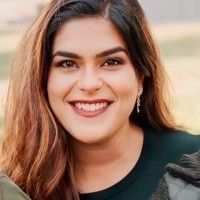- Center on Health Equity & Access
- Clinical
- Health Care Cost
- Health Care Delivery
- Insurance
- Policy
- Technology
- Value-Based Care
Elevating Value in Cancer Care With Innovations, Accessibility, Equity
Coverage from the IVBM Regional event in Denver, Colorado.
Innovations, accessibility, and equity within the treatment landscape, with a focus on evaluating value in cancer, were highlights of an Institute for Value-Based Medicine (IVBM) event held in Denver, Colorado, on October 10, 2024. Panelists discussed advances in treatment methods, technology, and immunotherapy across disease states, with some innovations destined to become best practices.

Glenn Balasky, executive director of Rocky Mountain Cancer Centers in Colorado, moderated the session “Implementing New Technology and Innovations in Cancer Care in Rural Communities.” The session featured Ken Cohen, MD, executive director of translational research at Optum Care, and Rhonda Henschel, MBA, senior vice president of payer and care transformation at The US Oncology Network.
Innovative Methods Within Rural Cancer Care
Glenn Balasky | Image: Rocky Mountain Cancer Centers

Balasky began the session by asking Cohen and Henschel for their perspectives on rural cancer care. Cohen explained that therapeutic complications may occur in patients who live near a rural hospital that lacks experience in managing these adverse events. Henschel noted that financial means and transportation needs are huge factors that can determine who has access to care in rural areas.
Ken Cohen, MD | Image: Optum

“One important thing brought up a couple of times this evening is the concept of decentralized clinical trials, which was a nonstarter before the [COVID-19] pandemic,” Cohen said. “I’ve been a trialist for 30 years, and the FDA wouldn’t let you draw a laboratory [test] outside of a clinical research center, but everything changed at the beginning of the pandemic.”
Henschel said her greatest concern is the significant lack of oncology providers for patients with cancer who live in rural areas. This compounds financial toxicity for these patients and their caregivers, who often take off work to travel to treatment facilities. Henschel suggested a multistakeholder strategy that focuses heavily on small, rural communities to close these accessibility gaps.
“I think where we start to see concerns is in access to clinical trials in some of these rural areas,” Henschel said. With cellular therapy, for example, “I think we’ve seen a lot of information, especially as we partner with the Leukemia & Lymphoma Society, on the lack of access of cellular therapies, new and novel treatments, and getting those penetrated into rural areas,” she said.
Balasky asked the panelists whether they believe patients with cancer “are already filtered out based on their social determinants of health.” Primary care physicians often give patients a diagnosis based on laboratory results, and those in rural areas may be referred to specialist surgeons in metropolitan centers due to limited local options.
Rhonda Henschel | Image: The US Oncology Network

Henschel addressed a project she is working on in Texas to secure state funding from Medicaid coverage plans to help with increased screening rates. She believes that after this is achieved, communities and hospitals can form partnerships to offer patients the care they need.
The Role of Telemedicine
The discussion shifted to technology as a potential solution for filling knowledge gaps, accessibility, and financial toxicity in rural cancer care. Telemedicine was suggested as a solution to provide widespread care to various regions. Cohen explained that although telemedicine is not the end-all, be-all solution, there are helpful models that utilize technology in a relevant manner.
He provided examples such as “grandpads,” which are similar to an iPad tablet but instead have large font sizes, limited icons, and connect only to primary care offices through a virtual video call. They allow medical providers to establish and maintain relationships to ensure adequate access to medications and food.
Another model, still in testing, began at The Everett Clinic, now Optum Care Washington, which operates as a precancer clinic with oncologists using relevant patient data to come to a definitive diagnosis, expediting the overall process. Lastly, Cohen mentioned the WISDOM trial (NCT02620852), a new trial looking at different ways to review breast cancer.1 Prior to a mammography, breast screening practices can include polygenetic testing, and obtaining a detailed family and personal history. Once a person reaches screening age, mammogram assessments of breast density can be uploaded. A team then works to define a personal screening regimen based on these characteristics, which is completed remotely.
Cohen emphasized that implementing these telemedicine methods within rural areas is largely dependent on state mandates. He acknowledged there are areas in the US where geographic proximity to a high-functioning system doesn’t exist and better mechanisms are necessary. Cohen referenced a study published in JAMA Network Open that conducted screenings for colorectal, cervical, and breast cancers in rural Indiana and Ohio by taking a mobile screening van into communities.2 Results found the screening rates doubled in these rural regions, but the study still only reached 50% of the population.
The discussion focused on how technology, particularly screening methods, can enhance cancer care. Cohen noted that the pandemic accelerated the shift toward remote patient monitoring, which has potential applications in oncology. However, both he and Henschel acknowledged that this technology is still in its developmental stages and hasn’t realized its full potential.
Therapeutic Advances
Amy Sidorski, MS, ANP-C | Image: Rocky Mountain Cancer Centers

All IVBM sessions explore newer treatment methods that consider cost-effectiveness in cancer care. Amy Sidorski, MS, ANP-C, advanced practice provider for oncology and hematology at Rocky Mountain Cancer Centers, explained the evolution of multiple myeloma treatment within their practice over the past several years through the introduction of quadruplet therapy based on the phase 3 PERSEUS trial, which has altered first-line treatment for patients. Results from PERSEUS (NCT03710603), presented in December 2023 at the American Society of Hematology Annual Meeting and Exposition, showed that patients who received daratumumab (Darzalex), bortezomib (Velcade), lenalidomide (Revlimid), dexamethasone (D-VRd) induction/consolidation followed by daratumumab plus lenalidomide maintenance had lower risk of disease progression or death than the VRd group, and improved minimal residual disease negativity.3
In addition, Sidorksi said, having chimeric antigen receptor (CAR) T-cell therapy and bispecific T-cell engagers for use in second-line treatment has changed her practices’ operations.
“It’s an amazing time to be a myeloma doctor,” Jorge Monge, MD, assistant professor of medicine and hematology at the University of Colorado School of Medicine in Aurora, said. Monge emphasized advancements made in multiple myeloma treatment from 1985 to 2024, emphasizing that a key area of evolution has been in the patient’s quality of life.
Lida Bighash, PharmD, BCOP, clinical pharmacy specialist in oncology at Denver Health, reviewed the past decade of advances in non–small cell lung cancer (NSCLC) treatment. As recently as a decade ago, there were no approved agents for use in NSCLC. Currently, there are several options for patients among all areas of NSCLC in neoadjuvant, adjuvant, and perioperative settings.
Tejas Patil, MD | Image: University of Colorado

Tejas Patil, MD, oncologist and assistant professor at the University of Colorado Cancer Center agreed with Bighash on the focal areas of development, referring to CHECKMATE-816, KEYNOTE-671, CHECKMATE-77T, as well as other clinical trials that led to improvements in patients’ pathologic complete response.4-6
Virginia Borges, MD, professor of medicine and medical oncology at the University of Colorado, discussed the significance of ribociclib (Kisqali) in early breast cancer treatment based on results from the phase 3. NATALEE trial (NCT03701334).7 Borges explained patients with early-stage HR+/HER2-negative breast cancer have a pair of CDK4/6 inhibitor options for treatment: abemaciclib (Verzenio) or ribociclib, although she noted that some patients are unable to tolerate either therapy.
Financial toxicity was a theme mentioned across all panels because the best therapies can have high out-of-pocket costs. “The main factor that alters a woman’s life and drives the financial cost of treating breast cancer through the roof is a metastatic diagnosis,” Borges said.
She explained that a metastatic diagnosis includes higher-cost medications used for longer durations and in routine procedures, whereas a diagnosis of early-stage breast cancer is significantly less expensive. Borges referred to public support programs for patients who are uninsured or underinsured. Overall, she highlighted the cost-effectiveness of preventing metastatic breast cancer compared with treating it.
Zahra Mahmoudjafari, PharmD, MBA, BCOP, FHOPA | Image: LinkedIn

The moderator for the multiple myeloma panel, Zahra Mahmoudjafari, PharmD, MBA, BCOP, FHOPA, clinical pharmacy manager in the Division of Hematologic Malignancies and Cellular Therapeutics at the University of Kansas Health System, asked Sidorski and Monge about the cost-effectiveness of CAR T-cell therapies. Sidorski stressed the importance of affordable CAR T-cell therapies for patients with myeloma but agreed that access has not been easy. She hypothesized that CAR T-cell therapies may be a more cost-effective option that will allow patients to move forward from previous therapy, potentially saving money down the line.
Monge explained why it is important to determine the duration of treatment on bispecific therapies, because starting treatment earlier for patients who remain on therapy the same length as patients starting later will result in similar financial toxicities. Transparent communication with appropriate stakeholders was suggested to develop models of cost ineffectiveness, which included fixed durations of therapy or minimal residual disease–adapted therapy.
Both Patil and Bighash emphasized the importance in considering financial toxicity within NSCLC treatment, acknowledging how one affects the other. They suggested patient assistance programs created by drug manufacturers as proposed solutions to lower the high costs of immunotherapies.
“There are a lot of trials that are looking at this question of de-escalation, which goes hand-in-hand with financial toxicity,” Patil said.
Bighash noted that if the institutions, insurance companies, or patients cannot pay out-of-pocket expenses for adequate care medications, then the patients are not receiving the best quality treatment from health care providers.
Takeaways and Next Steps
Moving forward, the cancer care community must continue to focus on developing innovative treatments, improving access to care, and addressing financial toxicity for patients. By working together, we can create a more equitable and effective cancer care system for all, panelists agreed.
“My best idea would be that we bridge the connection with people and then they make trips into the big city for what they need or [find] ways to get them to the city. Transportation [issues] can be overcome, but you can’t just bring very sophisticated care out everywhere. It’s just not economically feasible,” Balasky said in an interview with AJMC.
References
1. Eklund M, Broglio K, Yau C, Connor JT, Stover Fiscalini A, Esserman LJ. The WISDOM personalized breast cancer screening trial: simulation study to assess potential bias and analytic approaches. JNCI Cancer Spectr. 2019;2(4):1-7. doi:10.1093/jncics/pky067
2. Champion VL, Paskett ED, Stump TE, et al. Comparative effectiveness of 2 interventions to increase breast, cervical, and colorectal cancer screening among women in the rural US: a randomized clinical trial. JAMA Netw Open. 2023;6(4):e2311004. doi:10.1001/jamanetworkopen.2023.11004
3. Sonneveld P, Dimopoulos M A, Boccadoro M, et al; PERSEUS Trial Investigators. Daratumumab, bortezomib, lenalidomide, and dexamethasone for multiple myeloma. N Engl J Med. 2023;390(4):301-313. doi:10.1056/nejmoa2312054
4. A neoadjuvant study of nivolumab plus ipilimumab or nivolumab plus chemotherapy versus chemotherapy alone in early stage non-small cell lung cancer (NSCLC) (CheckMate 816). Clinicaltrials.gov. October 16, 2023. Accessed October 22, 2024. https://clinicaltrials.gov/study/NCT02998528
5. Efficacy and safety of pembrolizumab (MK-3475) with platinum doublet chemotherapy as neoadjuvant/adjuvant therapy for participants with resectable stage III, IIIA, and resectable IIIB (T3-4N2) non-small cell lung cancer (MK-3475-671/KEYNOTE-671). Clinicaltrials.gov. September 19, 2024. Accessed October 22, 2024. https://clinicaltrials.gov/study/NCT03425643
6. A study of neoadjuvant chemotherapy plus nivolumab versus neoadjuvant chemotherapy plus placebo, followed by surgical removal and adjuvant treatment with nivolumab or placebo for participants with surgically removeable early stage non-small cell lung cancer. Clinicaltrials.gov. July 23, 2024. Accessed October 22, 2024. https://clinicaltrials.gov/study/NCT04025879
7. A trial to evaluate efficacy and safety of ribociclib with endocrine therapy as adjuvant treatment in patients with HR+/HER2-early breast cancer (NATALEE). Clinicaltrials.gov. October 10, 2024. Accessed October 23, 2024. https://clinicaltrials.gov/study/NCT03701334

Health Outcomes of Dually Eligible Beneficiaries Under Different Medicare Payment Arrangements
December 1st 2025Within the same physician groups, 2-sided risk in Medicare Advantage (MA) was associated with higher quality and lower utilization for dually eligible beneficiaries compared with fee-for-service MA and traditional Medicare.
Read More
